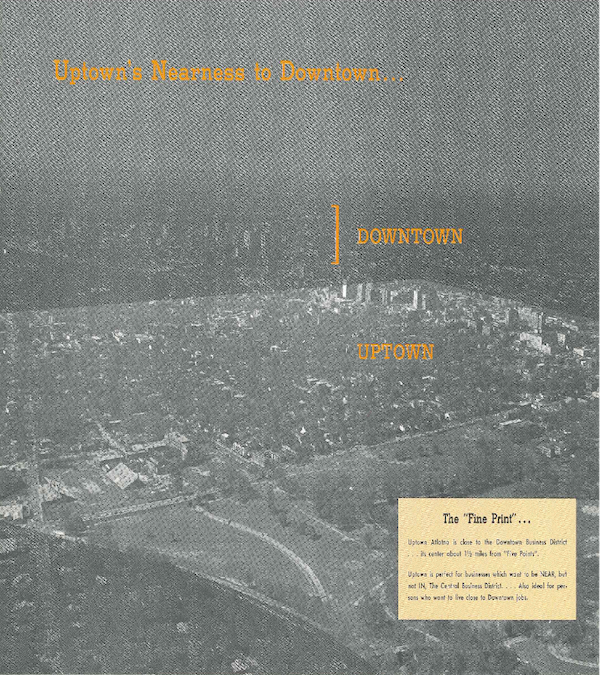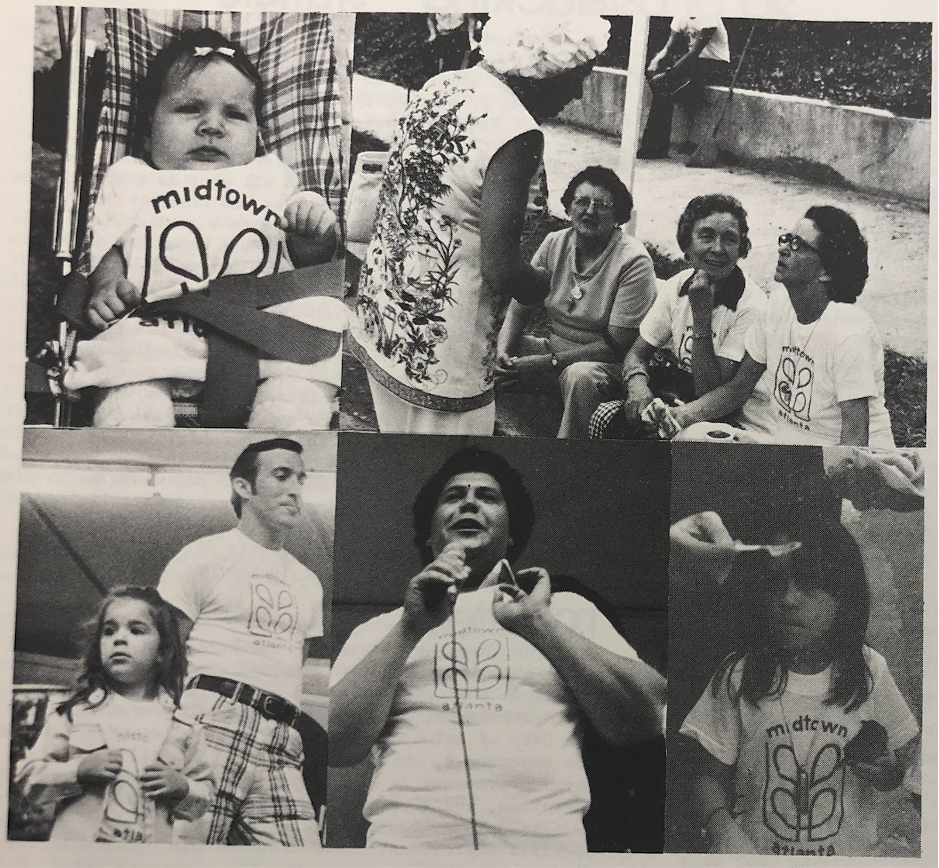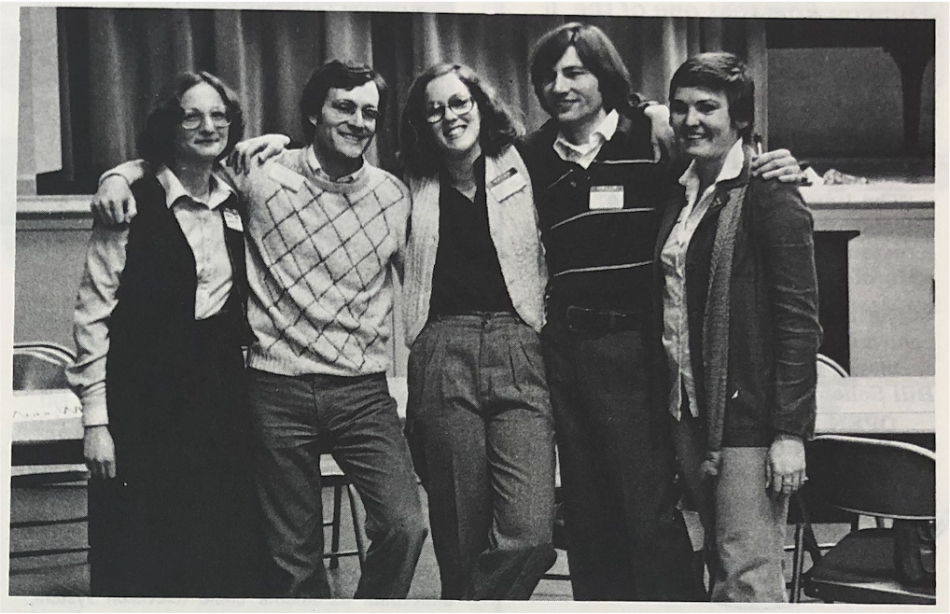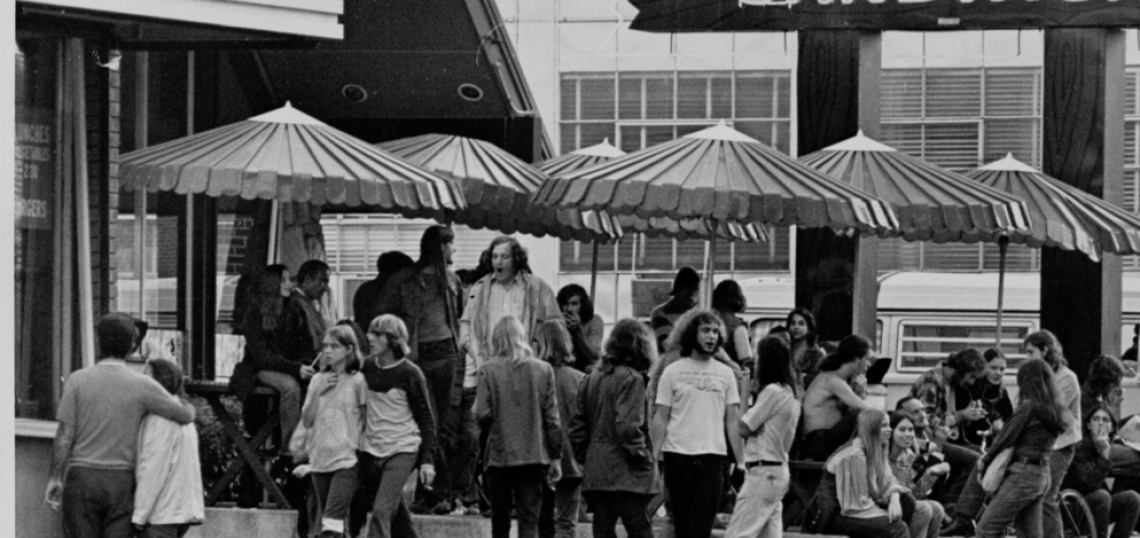These days, the construction cranes are ubiquitous, companies are relocating, and people are flocking to Atlanta’s fastest-growing and (arguably) most vibrant neighborhood. Midtown is home to 27,000 residents, some 6,000 new apartments (the second-most of any neighborhood in America), and a swelling roster of major corporations and arts attractions.
But it wasn’t always thriving.
Midtown's current success traces back to a visionary, a band of neighbors, and a fun-loving, community-focused organization that laid the foundation. The group that shaped Midtown's upward trajectory—Midtown Neighbors’ Association—continues its 53rd year with an objective to connect neighbors and lead projects that foster community.
This is the story of Midtown’s early days, which is also the story of MNA.
***
Six decades ago, the Buckhead crowd threw him a party, assuming his departure would lead to his demise. Deeper in Atlanta, blight was at an all-time high, redlining was common, and hippies would soon be roaming "The Strip" on Peachtree Street.
In spite of these things, their so-called “visionary” friend decided to relocate from beautiful Buckhead to what they'd deemed the “epicenter of erosion”—the area now called Midtown.
This, they thought, would be the last they’d see of him.
After attending his going-away party, young architect and visionary Henri Jova moved from Buckhead to the "Uptown" district in what is now Midtown’s Historic Garden District. Jova’s friends thought his move was reckless, career-ending, and unwise. “No sane person would move there,” they said. Nonetheless, Jova foresaw its potential and was determined to prove his Buckhead pals wrong. He moved in 1958.
 Aerial photo showing Uptown’s location in relation to downtown Atlanta, described as being a mile and ½ from Five Points and “perfect for businesses which want to be NEAR but not IN, the Central Business District.”"Uptown Ideas," Uptown Association of Atlanta, January 31, 1962
Aerial photo showing Uptown’s location in relation to downtown Atlanta, described as being a mile and ½ from Five Points and “perfect for businesses which want to be NEAR but not IN, the Central Business District.”"Uptown Ideas," Uptown Association of Atlanta, January 31, 1962
Free love and illicit behavior ran rampant along The Strip, which sat west of where Jova relocated on Mentelle Drive.
While renovating his home, Jova enlisted fellow architects to join his efforts, revive turn-of-the-century houses, and relocate there, too. His recruits included his future business partners John Busby and Stanley Daniels, who together would later design Colony Square.
Toward the late 1960s, several religious leaders and concerned residents kindled a movement to revive Uptown, the area once home to Atlanta’s premier shopping district. This effort spurred many Atlantans to act, including Jova.
In 1969, Jova gathered a group of neighbors at Grady High School (now Midtown High) for what would go down as the first meeting of the neighborhood association. In attendance were Jova, Daniels, long-time resident Elizabeth Nicholson, Dick Monroe, Charles and Linda DeMars, and Harriett Frankel, among others. Many of these enterprising souls were architects or were partnered with one.
Years later, Linda DeMars wrote in the Midtown Story that the first meetings were:
"... quite pleasant social gatherings where we pondered what exactly we were to do, while sipping white wine and eating cheese crackers… Our philosophy was that we needed to do something tangible first to show the rest of the neighborhood that banding together could have some desirable results in solving problems…"
On contemplating the organization’s name, she wrote:
"[w]e were the Temporary Steering Committee of Neighborhood X. Neighborhood X—because we had no recognizable geographic boundary names that we wanted to be known by. Nothing to do with [Piedmont Park]—that was the era when the drug dealers had taken over the park and no one was safe there ever. Not Tenth Street—that had too close a connection with The Strip and hippies. Ponce de Leon—that wasn’t much better, and what could you do with the Southern Railroad. We decided to table a name until later."
Neighborhood X elected its initial board of directors in the fall of 1969, with Jova as its first chairman, and changed its official name to the Uptowne Neighborhood Association (UNA). They added the “e” in Uptowne, the story goes, for style.
Jova’s first objective for the civic association was to implement the lessons learned from Ansley Park in the incipient Uptowne Neighborhood. Both Jova and the UNA board continued to meet at Grady High School and later held town halls at Grace United Methodist Church, while pursuing their goal of neighborhood regeneration.
During its first years, the board coordinated flower-plantings and landscaping projects on weekends and attended city council meetings during the week. It was during this time that charismatic Atlanta Mayor Maynard Jackson (1974–1982; 1990–1994) forged an important alliance with the neighborhood that lasted throughout his tenures.
 Hippies outside a Midtown restaurant in 1971, in the vicinity of Peachtree and 10th streets.Special Collections and Archives, Georgia State University Library/AJCP233-050w
Hippies outside a Midtown restaurant in 1971, in the vicinity of Peachtree and 10th streets.Special Collections and Archives, Georgia State University Library/AJCP233-050w
Around 1972, several real estate developers called Charles DeMars and asked him to consider changing the association’s name from Uptowne to Midtown. Why? Because they wanted to use the phrase “come uptown to Phipps” as a tagline for their Buckhead ventures.
Although the association’s name was Uptowne, and city planners had been calling the area “Uptown” for more than 15 years, the name never caught on; most residents thought the pretentious moniker poorly described the area. Interestingly, the developers of Colony Square, who were working with Jova’s architecture firm, also suggested the name change to “Midtown” and wanted to participate in the rebranding effort. Thus, the Midtown neighborhood was conceived, and the Uptowne Neighborhood Association became the Midtown Neighborhood Association between 1972 and 1973.
After MNA adopted its new name, the City of Atlanta later codified the name “Midtown” when it established the Neighborhood Planning Unit system.
 Map of NPU-E and its neighborhoods in 1976.“NPU-E Neighborhoods,” Bureau of Planning, City of Atlanta, 1976. [Planning Atlanta City Planning Maps Collection, Georgia State University Library.]
Map of NPU-E and its neighborhoods in 1976.“NPU-E Neighborhoods,” Bureau of Planning, City of Atlanta, 1976. [Planning Atlanta City Planning Maps Collection, Georgia State University Library.]
Soon after that, MNA moved its neighborhood boundaries to include Colony Square, taking advantage of the developer’s efforts to promote Midtown. Years later, when asked about the renaming, Jova stated in the Atlanta Constitution that if Buckhead/Phipps “were uptown, it was difficult for us to call ourselves ‘Uptowne,’ so we became Midtown.” Simple as that.
In 1973, MNA held its first Midtown block festival at 7th Street and Durant Place, representing the revival of Midtown and the connected community.
For several years, Midtowners who lived on Durant Place hosted the party in—and in front of—their homes. During the second block party, Mayor Jackson spoke and declared that September 13, 1975 would be “Midtown Day.” Jackson also held “People’s Day” on May 17th at Grady High School and toured the neighborhood with city councilmembers in 1975.
In another show of support, Jackson appointed MNA to the City of Atlanta License Review Board. That signaled the mayor's desire to allow Midtown residents to voice opinions about decisions that affected them, empowering the organization to influence the area immediately outside its geographic boundaries.
Today, MNA’s License and Permit Committee continues to review hundreds of licenses each year for Midtown and has participated in recent city-wide reforms to improve the process for licensees, create greater community influence, and nurture responsible Atlanta nightlife.
 Residents of all stripes and Atlanta Mayor Maynard Jackson (lower middle photo) sporting their MNA Midtown T-shirts in 1975.“T-hee [shirt],” Midtown Neighborhood Association, Midtown Story, December 1975; photos by John White and Judy Newman
Residents of all stripes and Atlanta Mayor Maynard Jackson (lower middle photo) sporting their MNA Midtown T-shirts in 1975.“T-hee [shirt],” Midtown Neighborhood Association, Midtown Story, December 1975; photos by John White and Judy Newman
As Midtown's popularity grew, so did property values and interest from developers. MNA subsequently faced many zoning challenges, including attempts from developers to rezone and change residential areas into commercial ones.
During the 1970s, tensions arose between MNA and developers, in many cases. Generally speaking, developers sought “progress,” but the MNA board evangelized neighborhood preservation and improvement. The board asserted that unless it stopped the “commercial encroachment” into leafy residential streets, there would be little in Midtown worth advancing.
Two noteworthy dramas involved MNA in the late 1970s.
The first occurred in April 1976 when Mary Mac’s Tea Room applied for a Special Use Permit to extend its parking lot on Myrtle Street into what was once a residential area. Co-owner Margaret Lupo argued that the permit would allow the restaurant to combine three lots (two existing parking, one new) into a larger, single lot that would increase off-street parking for patrons and reduce congestion in front of residents’ homes. MNA Chairman Murray Friedman, however, saw the application as encroachment of business into the residential area, and most board members upheld his view; MNA had granted a permit for the original parking lots, after all, just six years prior. In the end, however, Mary Mac’s built the lot.
In 1977, MNA Chairman Pat Willis navigated a crisis that would have drastically impacted housing in Midtown. That year U.S. Department of Housing and Urban Development (HUD) officials initiated a Section 8 Demonstration Rehabilitation Program in Midtown to help revive the “designated” neighborhood and provide much-needed housing for low-income families.
Although the MNA board agreed with the heart of the matter—reviving the neighborhood and providing multifamily housing—HUD bypassed both the NPU-E and MNA without soliciting feedback from either, which both considered unacceptable. Mayor Jackson sided with MNA and worked hand-in-hand to create terms for the developers, who later shifted their focus outside of the neighborhood.
 Newly elected MNA board members Marcia Tubb, Doug Abramson, Lynn Freudenberg, Sinclair Holberg, and Carol Brantley pose for a celebratory photo in 1979.“New Board Members,” Midtown Neighborhood Association, Midtown Story, March 1979; photo by Terry Thomas
Newly elected MNA board members Marcia Tubb, Doug Abramson, Lynn Freudenberg, Sinclair Holberg, and Carol Brantley pose for a celebratory photo in 1979.“New Board Members,” Midtown Neighborhood Association, Midtown Story, March 1979; photo by Terry Thomas
Residential pride grew in Midtown, and as the 1970s concluded, many formerly boarded-up houses became occupied homes, and a sense of community was instilled in the neighborhood.
But then Midtown began dealing with different issues: biker gangs replaced hippies; crime supplemented free love; prostitution increased. Such is life in an American city.
The Midtown Neighborhood Association (now Midtown Neighbors’ Association) leaned on experiences from the previous decade—and, more importantly, recognition and respect from residents—that would benefit it when addressing livability and infrastructure issues for decades to come.
Current MNA President Courtney Smith is proud of the role the association has played in Midtown’s evolution and is confident it will “continue to foster energetic engagement and thoughtful advocacy," she says, "to cultivate our sense of place during another pivotal time in Midtown’s growth.”
Adam C. Johnson has been writing about various aspects of Midtown’s metamorphosis as a historical Atlanta neighborhood for years. You can find him strolling through Piedmont Park or on Twitter @adamcharlesj. This is his first piece for Urbanize Atlanta.
• Recent Midtown news, discussion (Urbanize Atlanta)






